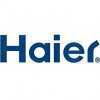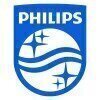Filter interviews by
LG Electronics Senior Engineer Interview Questions and Answers
10 Interview questions
Increasing product efficiency can be achieved through optimizing processes, improving technology, and enhancing employee skills.
Optimize production processes to eliminate waste and improve workflow
Upgrade technology to automate tasks and improve accuracy
Provide training and development opportunities for employees to enhance their skills and knowledge
I would improve the user interface to enhance user experience and streamline navigation.
Enhance user interface design for better usability
Streamline navigation to improve user experience
Implement user feedback to make necessary changes
Optimize performance for faster loading times
ISEER rating is calculated based on the weighted average of the cooling performance of an air conditioner under different conditions.
ISEER = (Weighted Cooling Capacity at 100% load x 0.4) + (Weighted Cooling Capacity at 75% load x 0.2) + (Weighted Cooling Capacity at 50% load x 0.4)
The higher the ISEER rating, the more energy efficient the air conditioner is.
ISEER rating helps consumers compare the energy efficien...
1 BTU is approximately equal to 0.29307107 watts. To convert BTU to watts, multiply by 0.29307107. To convert watts to BTU, divide by 0.29307107.
1 BTU = 0.29307107 watts
To convert BTU to watts, multiply by 0.29307107
To convert watts to BTU, divide by 0.29307107
1 ton cooling concept refers to the amount of heat required to melt one ton of ice in a 24-hour period.
1 ton of cooling is equal to 12,000 BTUs per hour
It is commonly used in the HVAC industry to measure the cooling capacity of air conditioning systems
For example, a 2-ton air conditioner can remove 24,000 BTUs of heat per hour
The refrigeration cycle is a thermodynamic cycle used in refrigerators and air conditioning systems to transfer heat from a low temperature to a high temperature environment.
The cycle consists of four main components: compressor, condenser, expansion valve, and evaporator.
The refrigerant enters the compressor as a low-pressure gas and leaves as a high-pressure, high-temperature gas.
The high-pressure gas then flows...
Sub cooling in air conditioning is the process of cooling the refrigerant below its saturation temperature to improve system efficiency.
Sub cooling increases the efficiency of the air conditioning system by ensuring the refrigerant is in a liquid state before entering the expansion valve.
It helps in preventing flash evaporation of the refrigerant, which can lead to inefficiencies in the system.
Sub cooling is typic...
Types of process include batch process, continuous process, and hybrid process.
Batch process involves processing a set amount of materials at one time
Continuous process involves ongoing production without interruption
Hybrid process combines elements of both batch and continuous processes
Mainstream refrigerants used in household air conditioning include R-410A, R-22, and R-134a.
R-410A is a popular refrigerant known for its high efficiency and environmental friendliness.
R-22, although being phased out due to its ozone-depleting properties, is still commonly found in older air conditioning systems.
R-134a is commonly used in automotive air conditioning systems but can also be found in some household ...
The relationship between current, voltage, and power is described by Ohm's Law, which states that current is directly proportional to voltage and inversely proportional to resistance.
Ohm's Law states that V = I * R, where V is voltage, I is current, and R is resistance.
Power (P) is calculated using the formula P = V * I, where P is power, V is voltage, and I is current.
In a circuit with a constant resistance, an i...
LG Electronics Senior Engineer Interview Experiences
5 interviews found
(2 Questions)
- Q1. How to increase efficiency of product
- Ans.
Increasing product efficiency can be achieved through optimizing processes, improving technology, and enhancing employee skills.
Optimize production processes to eliminate waste and improve workflow
Upgrade technology to automate tasks and improve accuracy
Provide training and development opportunities for employees to enhance their skills and knowledge
- Q2. What will you change in the product
- Ans.
I would improve the user interface to enhance user experience and streamline navigation.
Enhance user interface design for better usability
Streamline navigation to improve user experience
Implement user feedback to make necessary changes
Optimize performance for faster loading times
Interview Preparation Tips
I applied via Approached by Company and was interviewed in Apr 2024. There was 1 interview round.
(2 Questions)
- Q1. Technical about plastic and sheet metal
- Q2. Types of process
- Ans.
Types of process include batch process, continuous process, and hybrid process.
Batch process involves processing a set amount of materials at one time
Continuous process involves ongoing production without interruption
Hybrid process combines elements of both batch and continuous processes
Skills evaluated in this interview
I applied via Job Portal

(1 Question)
- Q1. Past experience and salary exp.
(1 Question)
- Q1. Kpi and past exp disc.
I applied via Approached by Company and was interviewed before Jun 2022. There were 5 interview rounds.

(3 Questions)
- Q1. Questiones based on past experience and projects
- Q2. Reason for switching the job
- Q3. Knowledge of CAD softwares
(7 Questions)
- Q1. What is sub cooling in air conditioning?
- Ans.
Sub cooling in air conditioning is the process of cooling the refrigerant below its saturation temperature to improve system efficiency.
Sub cooling increases the efficiency of the air conditioning system by ensuring the refrigerant is in a liquid state before entering the expansion valve.
It helps in preventing flash evaporation of the refrigerant, which can lead to inefficiencies in the system.
Sub cooling is typically ...
- Q2. How is ISEER rating calculated
- Ans.
ISEER rating is calculated based on the weighted average of the cooling performance of an air conditioner under different conditions.
ISEER = (Weighted Cooling Capacity at 100% load x 0.4) + (Weighted Cooling Capacity at 75% load x 0.2) + (Weighted Cooling Capacity at 50% load x 0.4)
The higher the ISEER rating, the more energy efficient the air conditioner is.
ISEER rating helps consumers compare the energy efficiency of...
- Q3. Draw the Refrigeration cycle
- Ans.
The refrigeration cycle is a thermodynamic cycle used in refrigerators and air conditioning systems to transfer heat from a low temperature to a high temperature environment.
The cycle consists of four main components: compressor, condenser, expansion valve, and evaporator.
The refrigerant enters the compressor as a low-pressure gas and leaves as a high-pressure, high-temperature gas.
The high-pressure gas then flows into...
- Q4. Mainstream refrigerants used in household air conditioning
- Ans.
Mainstream refrigerants used in household air conditioning include R-410A, R-22, and R-134a.
R-410A is a popular refrigerant known for its high efficiency and environmental friendliness.
R-22, although being phased out due to its ozone-depleting properties, is still commonly found in older air conditioning systems.
R-134a is commonly used in automotive air conditioning systems but can also be found in some household units...
- Q5. Explain 1 ton cooling concept
- Ans.
1 ton cooling concept refers to the amount of heat required to melt one ton of ice in a 24-hour period.
1 ton of cooling is equal to 12,000 BTUs per hour
It is commonly used in the HVAC industry to measure the cooling capacity of air conditioning systems
For example, a 2-ton air conditioner can remove 24,000 BTUs of heat per hour
- Q6. Relation between current, voltage and power
- Ans.
The relationship between current, voltage, and power is described by Ohm's Law, which states that current is directly proportional to voltage and inversely proportional to resistance.
Ohm's Law states that V = I * R, where V is voltage, I is current, and R is resistance.
Power (P) is calculated using the formula P = V * I, where P is power, V is voltage, and I is current.
In a circuit with a constant resistance, an increa...
- Q7. Conversion from BTU to watts and vice versa
- Ans.
1 BTU is approximately equal to 0.29307107 watts. To convert BTU to watts, multiply by 0.29307107. To convert watts to BTU, divide by 0.29307107.
1 BTU = 0.29307107 watts
To convert BTU to watts, multiply by 0.29307107
To convert watts to BTU, divide by 0.29307107
(1 Question)
- Q1. No questions just test
(5 Questions)
- Q1. Would you be comfortable to regularly work extra hours?
- Q2. Introduction about yourself?
- Q3. Why do you want to join LG/ consumer durable industry?
- Q4. If your manager and colleagues are busy with work , how will you manage to learn the things from them?
- Q5. Present Salary and expected salary
Interview Preparation Tips
Interview Questionnaire
1 Question
- Q1. All technical questions raised
Top trending discussions






Interview questions from similar companies

I applied via Walk-in and was interviewed before Aug 2020. There was 1 interview round.
Interview Questionnaire
1 Question
- Q1. About my last job description
Interview Preparation Tips

Interview Questionnaire
1 Question
- Q1. Stge concepts, vSAN, RAID, basic testing, OS concepts, NVMe, SATA, SAS

Interview Questionnaire
2 Questions
- Q1. Coding questions on data structures and oops
- Q2. Various questions on cv, projects, por's, etc
Interview Preparation Tips
Experience: Questions were normal like any other aptitude or coding tests.
Tips: Time given was enough for other sections but you need to hurry a little in aptitude part.
Duration: 60 minutes
Total Questions: 60
Round: Technical Interview
Experience: The questions were basic, some where well known like reversing a link list using recursion, designing of car parking lot using concept of oops, find tree height/diameter, etc.
Tips: 1. They ask you to write complete code on paper. This sometimes turn out to be a challenging task when you don't have compiler to correct you on basic things. Practice writing codes on paper.
2. They surely ask questions on oops, like polymorphism, inheritance, etc. besides their definition, also practice writing sudo codes to explain them
Round: HR Interview
Experience: Mainly i was asked questions on my internship experience and POR's.
Tips: They will try to grill you on some questions like 'Why we should hire you?', have a clear reason in your mind. Your other answers should not contradict with your reasons
General Tips: I don't know about other colleges but HP recruits small number of students from my university. Coding questions were average level and can easily be tackled. Many students were rejected after HR interview so don't take it lightly. They do grill you in a very good style if they are in doubt about your selection
Skills: willingness, Enthusiasm, Coding skills, Aptitude skills
College Name: IIT Guwahati

I applied via Walk-in and was interviewed before Dec 2019. There were 4 interview rounds.
Interview Questionnaire
1 Question
- Q1. Only experience .
Interview Preparation Tips

Senior Engineer Interview Questions & Answers
Haier Appliances Indiaposted on 11 Apr 2022

(8 Questions)
- Q1. Where do you see yourself in 5 years?
- Q2. What are your salary expectations?
- Q3. What is your family background?
- Q4. Share details of your previous job.
- Q5. Why should we hire you?
- Q6. Why are you looking for a change?
- Q7. What are your strengths and weaknesses?
- Q8. Tell me about yourself.
Interview Preparation Tips
LG Electronics Interview FAQs
Tell us how to improve this page.
LG Electronics Interviews By Designations
- LG Electronics Sales Executive Interview Questions
- LG Electronics Area Sales Manager Interview Questions
- LG Electronics Deputy Manager Interview Questions
- LG Electronics Assistant Manager Interview Questions
- LG Electronics Senior Engineer Interview Questions
- LG Electronics Area Manager Interview Questions
- LG Electronics Marketing Manager Interview Questions
- LG Electronics Manager Interview Questions
- Show more
Interview Questions for Popular Designations
Overall Interview Experience Rating
based on 6 interview experiences
Difficulty level
Duration
Senior Engineer Interview Questions from Similar Companies
LG Electronics Senior Engineer Reviews and Ratings
based on 79 reviews
Rating in categories
|
Assistant Manager
412
salaries
| ₹9.5 L/yr - ₹17.1 L/yr |
|
Deputy Manager
355
salaries
| ₹13.5 L/yr - ₹23 L/yr |
|
Senior Engineer
320
salaries
| ₹5.5 L/yr - ₹13 L/yr |
|
Sales Executive
300
salaries
| ₹1.8 L/yr - ₹5.6 L/yr |
|
Area Manager
215
salaries
| ₹7.6 L/yr - ₹18.1 L/yr |

vivo

OPPO

Dell

Bajaj Electricals
- Home >
- Interviews >
- LG Electronics Interview Questions














